Computational Theory of Perception
The computational theory of perception is a theory that describes the stages of how humans visually perceive the world - from the moment the eyes catch a glimpse of something new to the moment that the brain understands that new information as a still life with a water bowl (or landscape, or portrait, etc.). Essentially, the core concepts of foundations (brightness, shape, grouping, direction, motion, etc.) are stages of visual perception.
Understanding perception can assist in the creation of effective design. If one understands that brightness is a lower level perception (i.e. more important) than depth cues, then brightness could be stressed more heavily while creating a painting (or photograph, or poster design, or sculpture, etc.) in order to draw attention to specific areas within the painting.
The initial stage of perception is the visual field. The visual field consists of everything observed at a given moment, whether it is directly in front of an observer or in the periphery of vision. The visual field refers specifically to the impression made by light on the retina of the eye. At this stage, there are no distinctions within the visual field because the brain has not processed what the eye has observed.
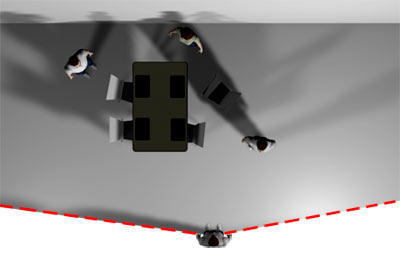
Visual Field: birdseye view

Visual Field: observer view
The first stage of perception is brightness awareness. At this stage there is a sense of generalized brightness that defines where areas of changing brightness occur. There is no sense of shape, color, or depth but more a vague sense of light and dark.
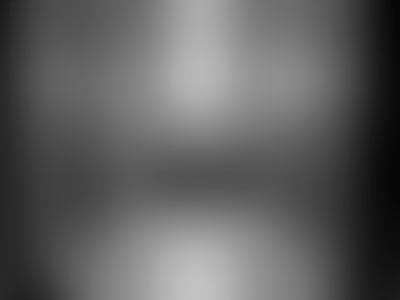
Brightness Awareness
The next stage of perception is edge awareness. Edges define the limits of the vague shapes perceived during the brightness awareness stage. Edges are defined by abrupt transitions of brightness (as opposed to a gradient of brightness), abrupt transitions of hue, and by motion. As a very low level awareness, primary figures are often created through brightness, hue, and/or motion. It is speculated that this level of awareness evolved as a survival mechanism (awareness of color to indicate food or potential mate and awareness of motion to indicate predators).
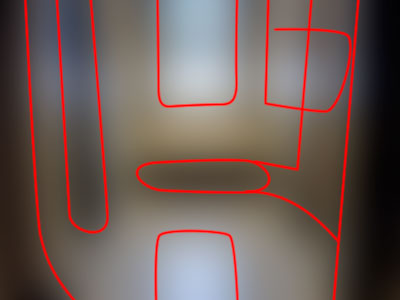
Edge Awareness
Three concurrent stages follow edge awareness: blob, vertex, and axis. Blobs refer to the ambiguous figures that have been perceived and the edges of the figures have been resolved but there is not yet an awareness of the blob in relation to anything else being perceived. Vertices refer to intersections of edges or points in the visual field, typically along the edges of blobs. Axis refers to the initial sense of up/down and left/right but there is not yet an awareness of distinct shape. Think of axis as a stick figure – the dominant vertical quality is determined by the central axis of the stick figure.

Vertex Awareness
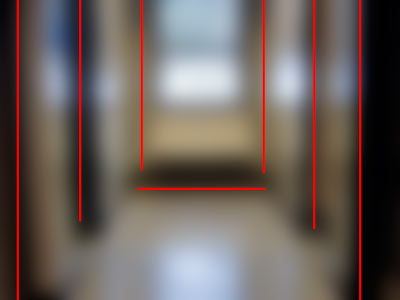
Axis Awareness
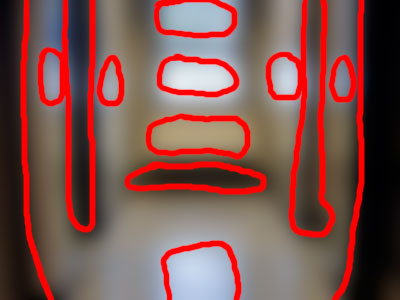
Blob Awareness
The previous stages combined are also referred to as the primal sketch or gray level awareness.
Once ambiguous figures are identified (blobs), intersections within the figures are identified (vertices), and a general sense of direction is identified (axes), the specific size, proportion, position, and orientation of the figures is determined. This stage is the first stage that begins to examine the various blobs in relation to the other blobs and in relation to the entire visual field. Size is an indicator of scale in relation to the visual field and the other blobs being perceived. Proportion is an indicator of whether a blob is larger vertically than horizontally (or vice versa). Position indicates the blobs location within the visual field. And orientation indicates a sense of direction for a given blob – if the proportion of the blob is larger vertically than horizontally, is it sufficient to indicate up/down direction?
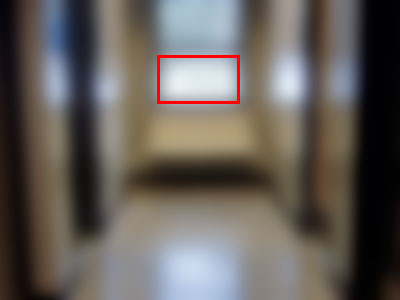
The size of the indicated shape is small in relation to the visual field.
The proprotion of the indicated shape is wider than tall.
The orientation of the indicated shape is horizontal.
The position of the indicated shape is slightly above center.
With brightness, edges, motion, hue, blobs, vertices, axes, size, proportion, position, and orientation processed by the brain, shape awareness occurs. Shape is defined in part by all of the previous stages but also by the addition of texture and color, including hue, saturation, and brightness. Texture refers to a grouping of figures that are both small enough and similar enough to tend to visually blend into a single figure. Texture often indicates the physical texture of a material, such as cloth or stone, but it can also indicate a purely visual quality, like a square filled with thin horizontal lines. Color refers to the three aspects of color – hue, saturation, and brightness – combined. It is important to note that saturation is not a lower level perception – brightness awareness is the lowest level perception, hue awareness is a slightly higher level perception, and saturation awareness is an even higher level perception.
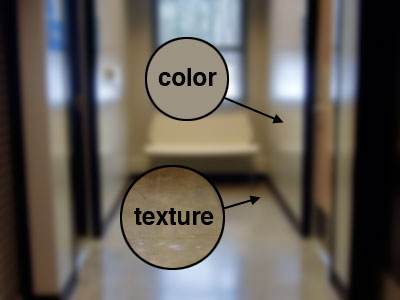
Shape Awareness
At this stage, there is the awareness of shapes within the field and a general sense of color and size relationships. The next stage of is surface/object awareness. All perception is three-dimensional due to binocular vision and how the brain interprets the visual field. Even if the object being perceived is a painting (two-dimensional surface), the brain processes the visual field as three-dimensional and indicates that the painting is a flat, two-dimensional surface. This allows an observer to quickly discern whether they are looking at a three-dimensional sculpture or a two-dimensional photograph of a sculpture. Though the surface/object stage brings awareness of space, it does not indicate how shapes are organized within the space, merely that space exists.
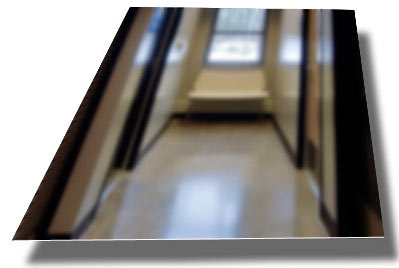
Surface/Object Awareness
While the objects were originally three-dimensional, this example is based on a photograph and perception leads to the awareness of a flat, two-dimensional surface.
The next level of awareness is organization or groupings. The various forms of grouping have been defined by Gestalt psychologists – closure, proximity, similarity, continuity, and common fate. The many different shapes within the visual field can now be combined and processed as higher level observations. The circular eye, the organic nose, the linear lips, and the textural hair are perceived as a group of shapes that are part of a larger whole (though not yet recognized as a face).

Gestalt: Closure

Gestalt: Similarity (and Proximity)
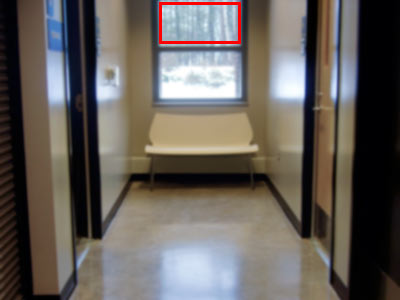
Gestalt: Proximity
With groupings resolved, depth cues are perceived. Depth cues refer to the various visual devices that indicate how shapes are organized in three-dimensional space. Which objects are closer to the viewer? Which objects are further away? There has already been an awareness of three-dimensional space in the surface/object stage, but the surface/object stage does not indicate organization. The depth cue stage indicates specifically what is close to the viewer and what is further away.
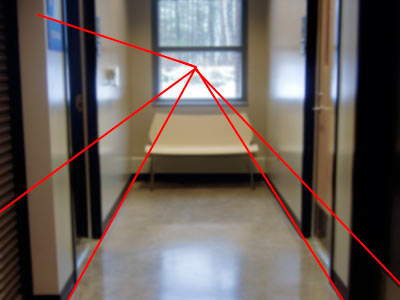
Depth Cue: Linear Perspective
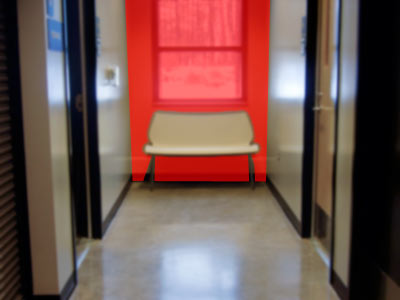
Depth Cue: Overlap
The final stage of perception is recognition. With all of the previous steps processed by the brain, recognition of what is being perceived occurs. The groups of eyes, nose, lips, and hair are recognized as a face and the face is recognized as being positioned in front of a wall.

Recognition
While the stages are sequential in terms of perception, the entire process of perception from awareness of the visual field to recognition of what is perceived is less than 100 milliseconds. The sequence of perception itself is less important than the individual elements that create perception. In some cases, alternate terms have been used in throughout Foundations for consistency with design textbooks and clarity (“blobs,” for example, are not included because blobs are a fairly low level perception and very quickly moves to shape).